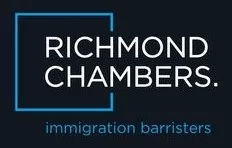With the UK's exit from the EU, the Government created new appendices to the Immigration Rules, Appendix EU and Appendix EU (Family Permit). The purpose of Appendix EU is to set out the basis on which an EEA citizen and their family members, and the family member of a qualifying British citizen, will be granted indefinite leave to remain ("settled status") or limited leave to remain ("pre-settled status"). These applications are under the Immigration Rules.
EEA citizens and their family members were previously entitled to apply under the Immigration (European Economic Area) Regulations 2016. For those who lived in the UK in accordance with the EEA regulations for a period of more than five years, an automatic right of permanent residence was obtained. Qualifying EEA citizens and their family members could then apply for a document certifying permanent residence as evidence of this.
There will also be EEA citizens who came to the UK prior to the EEA Regulations 2006 being in force, and may have obtained indefinite leave to remain rather than a right of permanent residence.
Therefore, depending on your circumstances as an EEA national, there are now different types of status available to you. In some circumstances, you may be required to apply for settled status, under Appendix EU, but in others you may not.
Permanent Residence
It is no longer possible to make an application for a document certifying permanent residence under the EEA Regulations.
If you have a document certifying permanent residence, you must either apply to the EU settlement scheme or apply for British citizenship (if you have been deemed to have acquired a right of permanent residence over 12 months ago or are married to a british citizen). However, an application for british citizenship does not extend leave to remain in the UK. Therefore, if you do not have a decision on a citizenship application prior to 30 June 2021, you should apply for settled status in order to preserve your position in the UK.
If you apply to the EU Settlement Scheme when you already have a document certifying permanent residence, you will not have to prove you have 5 years' continuous residence as this is already demonstrated by your document certifying permanent residence.
Indefinite leave to remain (ILR)
If you entered the UK before the EEA Regulations 2006 came into force, you may have obtained indefinite leave to remain rather than a right of permanent residence. You can continue to live in the UK without applying to the EU Settlement Scheme if you have indefinite leave to enter or remain in the UK.
If you do not have evidence of your ILR status or have evidence in the form of a letter, passport stamp or vignette, you may wish to consider any of the applications below.
EU Settlement Scheme
You can indicate on the EU Settlement Scheme online application form that you already have indefinite leave to remain.
An advantage of applying to the EU Settlement Scheme is that you should be able to spend up to 5 years in a row outside the UK without losing your settled status (instead of 2 years with indefinite leave to enter or remain).
You may have been given ILR automatically if you're an EU, EEA or Swiss citizen who lived in the UK before 1973. If you do not have a document proving your indefinite leave to remain, you can also apply under the EU settlement scheme and if you do obtain 'settled status' you can view your status or prove it to someone else online.
However, you will not get a physical document and the 'settled status' scheme does not confirm when you initially obtained indefinite leave to remain.
The main advantages of the EU Settlement Scheme is that it is a free application and the application can be made and processed quite quickly. The current estimated processing times as published on 22 May 2020, are between 5 working days and a month.
Windrush Scheme
As set out above, you may have been given ILR automatically and not received any documents confirming this. EU nationals with ILR may be eligible for the Windrush Scheme if they entered and settled in the UK prior to 31 December 1988.
To apply for the Windrush Scheme, you will need to complete a paper application form and provide evidence demonstrating your length of residence in the UK. This can be in the form of evidence of employment, school certificates/letter, medical evidence etc. You are not required to submit original documents, so long as copies of documents are sufficiently clear. The Windrush Taskforce will also cross check your records with other government departments such as HMRC to obtain evidence of your length of residence in the UK.
The Windrush Scheme is also free. It can take longer than the EU Settlement Scheme as you will be required to attend a biometrics appointment at a Home Office Service Support Centre and the Windrush Taskforce will need time to cross check your records with other government departments. The scheme aims to give an individual a decision within two weeks of their attendance at a biometrics appointment, but this can take longer if more information is required.
The main advantages of this application is that you will receive a grant letter confirming the date which you were deemed to have acquired indefinite leave to remain and a Biometric Residence Permit (BRP) confirming there is no time limit on your stay in the UK. This can be beneficial if you would like to demonstrate a date for ILR for a British citizenship application or if you have a child born in the UK after you obtained ILR, to prove they are British nationals.
No Time Limits
If you are an EU national who obtained ILR prior to the EEA Regulations, you may have evidence of this in the form of a stamp in your passport, a vignette, a letter from the Home Office or if you have a Biometric Residence Permit (BRP).
If your evidence of ILR is in the form of a stamp, vignette or letter, you may wish to transfer this to a BRP card through making a No Time Limits (NTL) application. As explored in an earlier blog post, you are not required to transfer your ILR to a BRP, but there can be some benefits in doing so.
The main advantage of an NTL application is that you will receive a BRP which:
- Has enhanced security features which cannot be found on an old style vignette (sticker) which means there is less chance of it being used fraudulently by another person;
- Is evidence that a person has the right to stay permanently in the UK and has a right to work and access certain benefits;
- Will facilitate travel to and from the UK.
The main disadvantages are the cost and time involved in making an NTL application. The application fee for a NTL application is £229. You'll get a decision within 6 months of attending your UKVCAS appointment. If you want a faster decision you can pay an extra £800 for the super priority service, which aims to give a decision in 24 hours. Priority services are currently limited due to covid-19.
The content of this article is intended to provide a general guide to the subject matter. Specialist advice should be sought about your specific circumstances.


